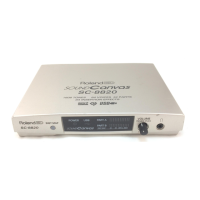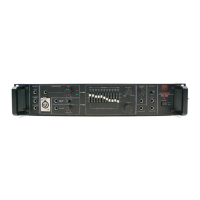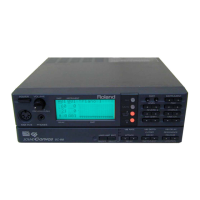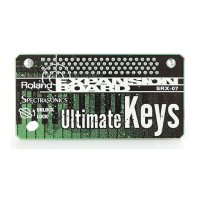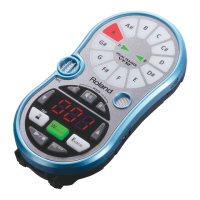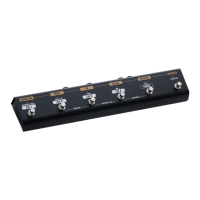If you’re looking for a specific kind of instrument, you can search for that group of instruments by using
the Volume ID select. Move your cursor to the ID (ALL) location and press the S1 button. You then can
use the three letter ID system to show all the types of a particular instrument. For instance, if you’re
looking for a bass patch, you can use the “BS” ID to show all the Bass patches on the the disk. Move
your cursor to BS and press S1. The disk load page will come-up and display just the patches that use
the “BS” ID. To reset for ALL, go back to select the Volume ID and press F2 (ALL).
Move your cursor down the list and highlight the Patch or Patches that you want to select for loading.
After you highlight the Patch press the S1 button to select it. There will be a check mark next to the
name showing you that it is selected for loading. If you want to deselect it, press the S1 button again.
After selecting the Patches that you want to load, press the F3 / Load button. The Patches will load
from the drive into the memory of the S-760. Make sure that you have enough time available (available
RAM) to load the patches, otherwise you’ll be given a Memory Full error.
Creating your own Performance
Once your Patches are loaded you can create your own Performance. Use the Jump page by pressing
the Shift + Jump button. Move your cursor to the first position and press S1. You will come to the
Performance Play page 1. You can start from an empty Performance by highlighting the number next
to Performance name and pressing S2. Move your cursor down and highlight the first ———-Off———-
space under Patch Name and press S1. A list will be displayed of the Patches that you loaded into
memory. Move your cursor to a Patch that you want to use and highlight it, then press S1. You will
come back to the Performance Play page 1 and the Patch that you selected will be in the first Part.
Once you’ve set-up your own Performance you can save it to disk and retain all the parameters that you
have set-up, such as Volume, Pan, Output, MIDI Channel, etc.
The S-760 can load from several different types of SCSI devices.
Saving Performances
1) From the Performance Play page, press the Shift button, then the Jump button.
2) Move the cursor down with the arrow down button to (3) Disk Save. Press S1.
3) Move the cursor to select the Target, (Performance), and Current Drive (CD).
4) After you set the Target and location, move your cursor down to the list of files that are in
memory and mark the ones you want to save by highlighting and pressing the S1 button to
mark them. Once you’ve marked the file(s), press the F3 Save button, and the S-760 will
start saving the marked file(s) to the SCSI device or floppy disk.
Volume Dump to FD
The S-760 can save a Volume onto a floppy disk without having to save the actual sample data. If
you’re using a CD-ROM player, but don’t have a hard drive, you can save your customized Volumes,
Performances, Patches and Partials onto a floppy disk. When you reload from the floppy, the samples
are loaded from a CD-ROM disc, etc. after the upper parameters are loaded from the floppy disk.
1) Using the directions from Loading Sounds (Using the Preview CD-ROM Disc), load and
create a custom Performance from a Volume
2) Jump to the System Volume ID page. Press Shift + Jump and move the cursor to 4) Sys
Volume ID and press S1.
3) Name the Volume by pressing S2 and use the S-760 ASCII keyboard to create your
Volume Name by selecting the letter with your cursor and pressing S1 for each letter.
© 1995 Roland Corporation U.S. SN29 S-760 Supplemental Manual Page 6 of 17

